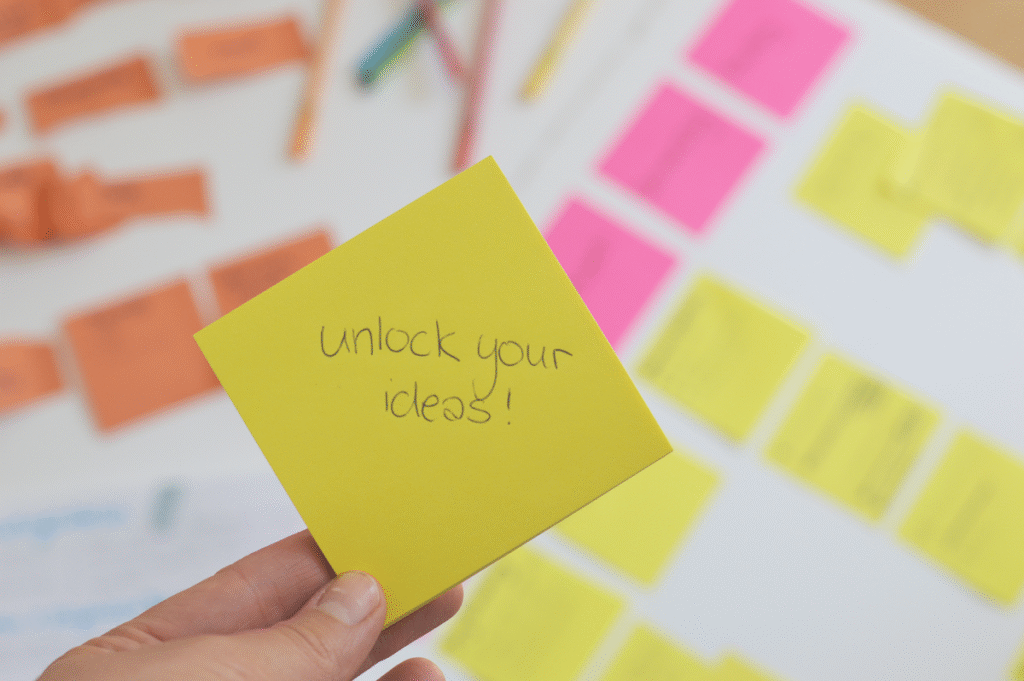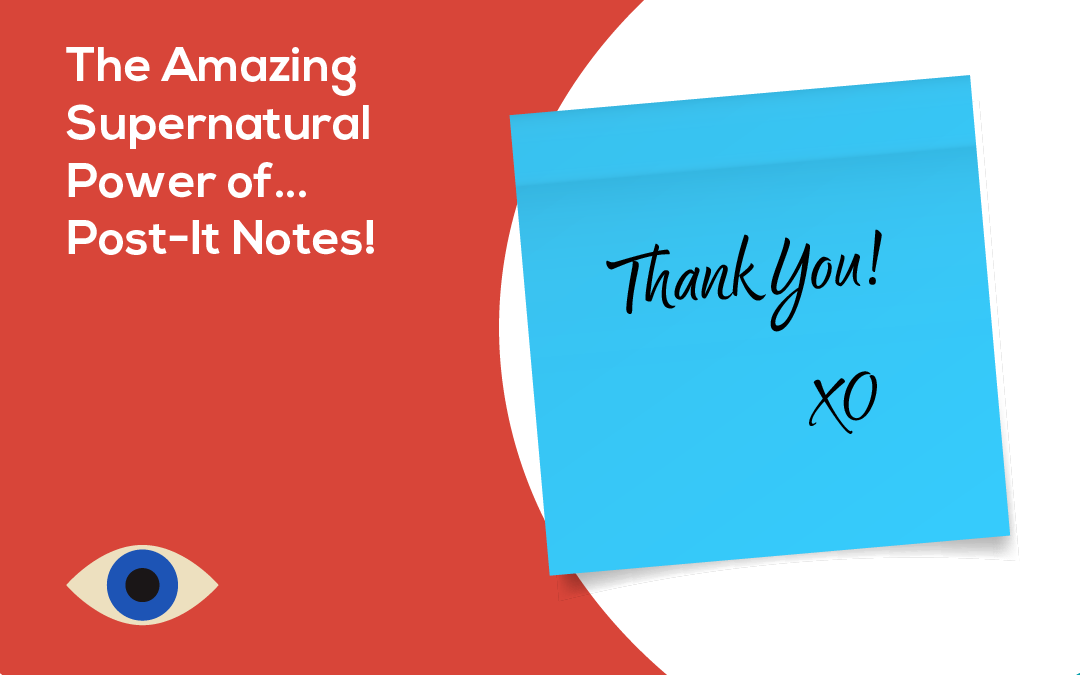That little square of paper stuck to your monitor is staring back at you. You know the one. It’s probably reminding you of a deadline or a phone number you needed three days ago. We all see Post-It notes as simple tools for remembering things, but what if they could do more? These colorful, sticky pieces of paper are actually powerful allies for your mental health and clarity, helping organize your mind just as much as your desk. You see them everywhere, from home offices to bustling corporate environments. They are a staple of modern life, found in desk drawers alongside other essential writing supplies. But there is a secret to their power that goes beyond just jotting down a shopping list or a phone number. They have become so ingrained in our culture that it’s hard to imagine a world without them. This humble piece of paper is a fundamental part of our daily fight to remember all the little details. It’s time to appreciate how these notes can truly support our well-being.
From Accidental Glue to a Global Phenomenon

Like many great inventions, the Post-It note was a happy accident. A 3M scientist named Dr. Spencer Silver was actually trying to create a super-strong adhesive back in 1968. Instead, he made the opposite: a very weak, pressure-sensitive adhesive that could be peeled off and re-stuck without leaving residue.
For years, his creation was a solution without a problem, an interesting chemical formulation waiting for an application. That is, until his colleague, Arthur Fry, got frustrated with his bookmarks falling out of his church hymnal. He remembered Silver’s weak adhesive, applied some to a piece of paper, and the iconic sticky note was born.
This simple origin story is a reminder that sometimes the most helpful tools come from unexpected places. The initial product, called the “Press ‘n Peel” bookmark, had mixed results in test markets. However, a massive marketing push in Boise, Idaho, called the Boise Blitz, proved the product’s value, with 90% of people who tried the free samples saying they would buy the product. You can learn more about this accidental discovery from the creators themselves.
From there, the Post-it® brand exploded, becoming one of the most essential office products worldwide. It’s a fun story of creative problem-solving and persistence. Today, you can easily view products from the brand, ranging from the classic canary yellow to a whole spectrum of colors.
The Tangible Joy of an Untangled Mind
Why does it feel so good to write something down on a physical note? It’s all about something psychologists call cognitive offloading. You’re literally taking a thought that’s swirling around in your brain and giving it a physical home.
Our brains are wired to remember unfinished tasks, a phenomenon known as the Zeigarnik effect. This is why that one thing you forgot to do keeps bugging you at 3 AM. Writing it on a Post-it® note signals to your brain that the task is captured and won’t be forgotten, allowing your mind to let go.
This allows your mind to release its grip on the information. You can finally stop using so much precious mental energy to simply hold onto tasks and reminders. Instead, you free up that space for actual thinking, problem-solving, and creativity.
How Post-It Notes Can Support Your Mental Wellness
The practical application of these notes for mental health is more than just theory. In fact, some therapists are using them as a core part of their practice. This simple tool can become a bridge between a person and their own progress.
Dr. Trina Seefeldt, a psychologist at Denver Health, uses sticky notes to help build connections with her patients. Therapy can feel abstract and scary for some people. A Post-It note is something concrete they can hold in their hands and take with them.
It’s a piece of the session, a tangible reminder of the work they are doing. This small gesture can make someone feel seen and supported, offering a personal touch. When dealing with sensitive information, this direct physical handoff respects HIPAA privacy principles in a way digital messages cannot.
Building Connection, One Note at a Time
When you start therapy, you might wonder if it’s really going to help. Goals can feel huge and overwhelming. Dr. Seefeldt recognized this and started using sticky notes to make progress feel more immediate.

She gives patients something to take with them right from the beginning. She scribbles breathing exercises or helpful phrases on a note in her own handwriting. It’s a personal, tangible piece of support they can carry or stick on a car’s dashboard.
This act creates a bond and shows that the therapist is a partner in the patient’s journey. It can enhance user experience in therapy, making it feel more collaborative. According to the work being done at Denver Health, this connection is what truly drives progress.
Externalizing Your Internal Battles
Have you ever felt like your anxious thoughts were just running in circles in your head? Writing them down helps to externalize them. It takes the thought out of you and puts it onto the paper, where you can look at it more objectively.
This is a technique used in Cognitive Behavioral Therapy (CBT). A Post-It note is the perfect size for capturing a single negative thought. Once it’s written down on one of the list notes, you can challenge it, reframe it, or simply acknowledge it and let it go.
You can also use them for positive affirmations. Writing down something kind about yourself on a sticky note and putting it on your bathroom mirror is a powerful way to start your day. It interrupts negative self-talk with a physical, visible reminder of your worth.
Creating a Visual Record of Your Progress
One of Dr. Seefeldt’s patients once brought in a picture of their refrigerator. It was completely covered in the little sticky notes she had given them over many sessions. This wasn’t just a collection of notes; it was a wall of their accomplishments.
Each note sticky notes represented a moment of insight, a tool they learned, or a hard day they got through. Seeing them all together creates a powerful visual story of growth. The different colors brighten the space, turning a kitchen appliance into a testament to their hard work.
Psychiatrist Irvin Yalom famously said, “It’s the relationship that heals.” For these patients, each Post-It note is a small symbol of that healing relationship. It’s a reminder that someone is in their corner, helping them stay organized on their journey.
Choosing Your Tools: More Than Just a Yellow Square
The classic 3×3 yellow square is iconic, but the range of products notes available today is vast. Picking the right tool for the job can make your organizational efforts even more effective. You can find a huge variety at any major office supply retailer.
For example, Post-it® Super Sticky Notes are a great choice for surfaces where regular notes might fall off. Think textured walls, fabric cubicles, or the dashboard of your car. These notes stick with a stronger adhesive, ensuring your reminders stay put.
If you’re a list maker, lined sticky notes provide the structure you need for clear, organized thoughts. These are perfect for daily to-do lists, grocery lists, or jotting down meeting action items. Using lined sticky paper keeps everything neat and easy to read.
For those who are environmentally conscious, there are options like recycled notes. These are typically made from 100% recycled paper, offering a sustainable way to manage your tasks. You can often find these options at stores like Office Depot.
Practical Ways to Boost Your Mental Health with Sticky Notes
You don’t need to be in therapy to get the benefits. Anyone can use Post-It notes to manage stress, stay focused, and feel a little better. Here are a few simple practices you can try, incorporating different types of notes.

- The “Done” List. We all have to-do lists, but they can sometimes feel like a list of our failures. Try making a “done” list instead. At the end of the day, write down three to five things you accomplished on separate notes and stick them where you can see them.
- The Gratitude Wall. Dedicate a small area on a wall or your computer monitor. Each day, write down one thing you’re grateful for on a sticky note and add it to the space. After a few weeks, you’ll have a colorful monument to the good things in your life.
- The Brain Dump Zone. Feeling scattered? Grab a stack of Post-It notes and start writing down every thought, task, or worry that comes to mind. Using one note per thought allows you to sort them later into categories like “Urgent,” “Later,” or even “Trash.”
- The Worry Jar. This is a great exercise for anxiety. Write down your worries on separate notes, fold them up, and put them in a jar. After a month, open the jar and read them; you’ll likely find that most of your worries never happened.
- Affirmation Stations. Place notes with positive affirmations in places you frequent. Think of your laptop, the coffee machine, or your car’s steering wheel. These small, repeated messages can slowly reshape your inner monologue.
- The “Single Task” Focus. Overwhelm often comes from trying to do too much at once. Each morning, choose the one most important task for the day. Write it on a single Post-It note and stick it in your line of sight, making it easy to skip distractions.
- Personal Kanban Board. Use a wall or large dry erase board to create three columns: To Do, Doing, and Done. Write each task on a separate sticky note and move it across the board as you progress. This is a visual and satisfying way to track projects.
- Idea Parking Lot. During a meeting or focused work session, new ideas can be distracting. Write them down on a sticky note and “park” them on a designated easel pads or wall space. This captures the idea without derailing your current focus.
Beyond the Yellow Square: Color Psychology and Organization
Post-It notes now come in a rainbow of colors for a reason. Color has a psychological impact and can be a fantastic organizational tool. Using a color-coded system with your Post-it® notes can help your brain process information faster.
You could assign certain meanings to different colors to bring order to your brain dumps or to-do lists. For example, red could be for urgent deadlines, while green is for new, creative ideas. This visual sorting makes your tasks easier to digest and helps you personalize content for your brain.
The goal is to improve site of your organizational system, making it visually intuitive. Here is a sample system you could adopt. You can find these colors at any store locator for office supplies.
| Color | Suggested Use |
| Red / Hot Pink | Urgent / High Priority / Deadlines |
| Blue | Work-Related Tasks / Information |
| Green | New Ideas / Brainstorming / Growth |
| Yellow | Personal Reminders / Appointments |
| Orange | Questions / Follow-up Needed |
| Purple | Creative Projects / Long-Term Goals |
Experiment and find a system that works for your brain. The goal is consistency. Soon, you’ll associate each color with its purpose, making your planning almost automatic and improving your user experience with your own system.
The Digital Age vs. The Humble Post-It
With countless digital apps for organization, are Post-it® super sticky notes becoming obsolete? Not at all. In fact, their physical nature gives them a distinct advantage over digital notifications that we often swipe away without a second thought.
There’s also power in the physical act of writing. Studies have shown that writing by hand can improve memory and learning more effectively than typing. The connection between your hand and your brain as you form the letters on a paper pads helps to encode the information more deeply.
A sticky note on your laptop is impossible to ignore, unlike a digital reminder that can be easily dismissed. A note dispenser on your desk makes grabbing a pop-up notes instantaneous. A physical note also has a very clear privacy policy: it belongs to you and isn’t part of a system that might record user sessions or track site usage to sell promotional products.
It’s not about choosing between analog and digital; it’s about using both to their strengths. They can work together to create a system that truly supports you. Use your digital calendar for long-term appointments, but use sticky notes that stay put on your monitor for the urgent tasks of the day.

Conclusion
That little square of paper is more than just a place for reminders. The simple Post-it® super sticky note is a low-tech, high-impact tool for decluttering your mind. It’s a way to externalize your thoughts, track your progress, and give yourself small, tangible reminders that you’re moving forward.
From organizing your thoughts on easel pads to using sticky tabs in your planner, these versatile tools help you manage the main content of your life. They provide a physical home for your thoughts so they do not have to live inside your head all day. It is a simple but effective method to stay organized and reduce mental load.
The next time you feel overwhelmed by the mental chatter, grab a pad of these essential school supplies. Whether you use super sticky ones or classic yellow, you might be surprised at how much calm you can find. A simple piece of paper can make a world of difference.




0 Comments